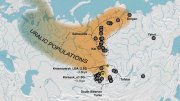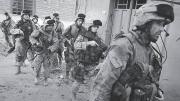A recent episode of the Here & Now interview show on WBUR, a Boston-based National Public Radio affiliate, features Jocelyne Cesari, director of Harvard's Islam in the West Program and editor of the new 700-page, two-volume Encyclopedia of Islam in the United States.
Among the tidbits that Cesari offers: Islam has been part of U.S. history for longer than most Americans think; she cites claims that the crews of the Niña, the Pinta, and the Santa Maria—as well as later voyages that actually reached what is today the United States—included some Muslims, as did the ranks of slaves transported from Africa to the United States.
Talking with host Robin Young, Cesari explains the forces that led to the creation of the Nation of Islam and discusses the differences between Muslim culture in pluralistic America and in more traditional, and in some cases theocratic, societies in the Middle East, Asia, and Africa.
She also mentions the controversy that unfolded last spring at Harvard, when the College agreed to close the Quadrangle Athletic Center to men for two hours a day, three days a week, to allow Muslim (and other) women students to exercise in a single-sex environment. See the New York Times's coverage of that story here.
You can listen to the Here & Now podcast here.







